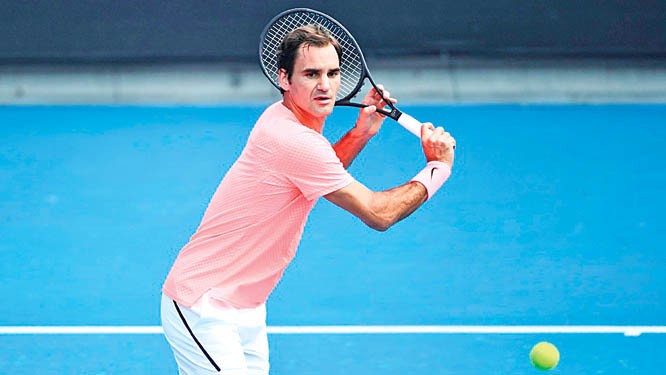
As long as Federer doesn’t start feeling that his body is giving up on him, like it did in New York, his fans would want him to keep playing, contending and winning majors for as long as possible

World No 2 Roger Federer was knocked out in the fourth round of the US Open, the final of which will be played later tonight. Not only was the loss against the unheralded John Millman shocking owing to the disparity in the pedigree of the two competitors, the manner in which the match unfolded was extremely surprising.
That Federer said he was ‘happy when the match finished’ underscores that he wasn’t comfortable at all in the trying playing conditions, with the New York weather especially hot this year. And even though Federer’s Round of 16 clash was taking place at night the heat and humidity has still been a major factor throughout the tournament regardless of when the tournament is played.
77 unforced errors in the four set loss against Millman show just how much of an impact the conditions had on the players.
Of course, Federer alone hasn’t been the one suffering owing to the heat and humidity. Novak Djokovic has complained about it in multiple rounds, comparing Arthur Ashe stadium to a sauna after his quarterfinal win over Millman.
Even though Federer was never at his best in trying conditions in his heyday, now at 37 it obviously took more of a toll on him than it did on others. But more than the weather conditions and how the tournament might want to address similar heat in the future, it is the future of Roger Federer that the tennis world is deliberating over.
Both Federer and Rafael Nadal made historic comebacks last year which started off with the epic Australian Open final. The two went on to divide the four majors between them and were the sole contestants for the number one ranking as well, as Andy Murray and Djokovic were sidelined by injuries and lack of form.
Federer looked like doing the same, and actually going one better at the start of this year, as he defended his Australian Open title in January and became the oldest World No 1 in ATP history by winning the Rotterdam open in February - taking the ranking from Nadal.
While the No 1 ranking would swap hands between the two maestros thrice since then, Federer only managed to keep it for a couple of one week stints after Nadal’s loss in Madrid and the Swiss’ win in Stuttgart.
The season got pear-shaped for Federer following the Indian Wells final defeat against Juan Martin Del Potro - where the Swiss had match points - until which point he was unbeaten for the season. Federer lost his first match at the Miami Masters to Thanasi Kokkinakis, who at 175 became the lowest ranked player ever to beat a World No. 1. The ranking summit was then passed on to Nadal, who kept it till Dominic Thiem defeated him in the quarters of the Madrid Masters in May.
But Federer’s main goal, as has been the case throughout this case, was a shot at Wimbledon more so than the ranking or any other tournament, for which he skipped the entire clay court season for the second year running. After winning Stuttgart, a surprise loss against Borna Coric in the Halle final, was a blip even if it handed over the World No 1 ranking to Nadal ahead of Wimbledon.
Even so, another shock at SW19 ensured as eventual runner-up Kevin Anderson came from two sets down to defeat Federer.
The focus then turned to the North American hard court season and more specifically the US Open, as Federer sat out Toronto Masters to get in prime shape for Flushing Meadows. He reached the Cincinnati final where he came up short against Djokovic who completed his ATP Masters 1000 haul as the Swiss struggled to produce his best.
It is evident, and he has said as much himself, that for Federer the sole ambition left is winning majors. And so at 37, the question for him is how long does he feel he can be competitive and challenge for majors.
Let’s not forget that such a question would’ve posed itself during his Grand Slam title drought between Wimbledon 2012 and Australian Open 2017, which he eventually answered by winning three out of five majors in a span of 12 months.
But does he see himself adding to his record tally of 20 majors over the next couple of years? More importantly, does he feel he can go deep in the three majors he will compete in to be a regular factor? The answer for that should be yes for at least the next year, and Federer would be best advised to take a rest for the remainder of this season, to prime himself for a third successive Australian Open.
This piece is being written before the US Open semis where both Nadal and Djokovic will be contesting in separate halves, potentially setting up a mouthwatering final. The safe money is of course on one of the two winning it all.
With Nadal at 17 majors and Djokovic at 13 at the time of writing, and both five years younger, does Federer feel that his record tally is under threat? Is that what is motivating him to continue to target more majors in the years to come?
But perhaps the bigger question is, given how physical Nadal and Djokovic’s games are, can either of them even be a factor at majors five years from now?
The question of retirement follows every time some of Federer’s all-time great legacy suffers an upset. But as long as he doesn’t start feeling that his body is giving up on him, like it did in New York this week, his fans would want him to keep playing, contending and winning majors for as long as possible.